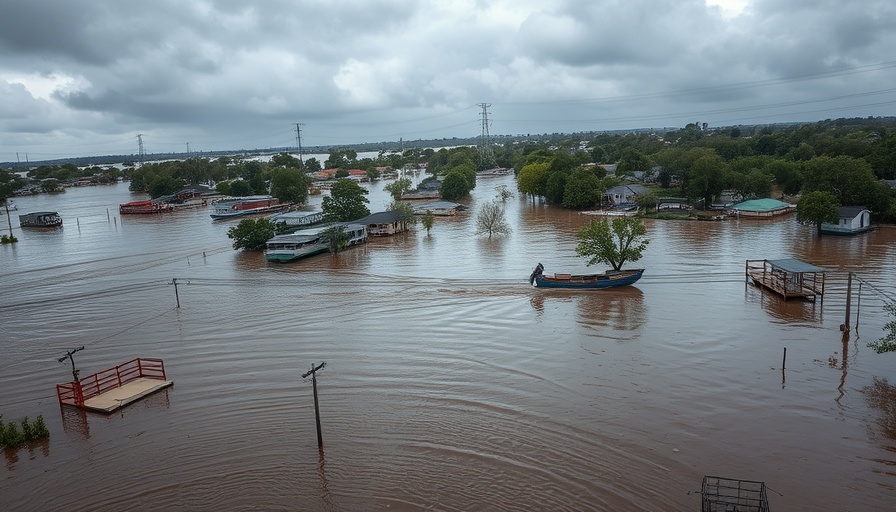
Flash Floods Devastate Hill Country: A Tragic Overview
The Hill Country region of Texas has been rocked by severe flash floods, leading to a heartbreaking toll. As of the latest updates, the death count has reached 24, with many still missing, spurring rapid search and rescue operations. Kerr County has specifically been hit hard, with reports indicating that up to 10 inches of rain fell within just a few hours, causing the Guadalupe River to swell dramatically.
Understanding the Causes of This Catastrophe
This tragic situation unfolded overnight on July 4, 2025, when heavy rains transformed rural pathways into torrential waterways. With the Guadalupe River rising 26 feet in a mere 45 minutes, the declaration from Lt. Gov. Dan Patrick that “it’s going to be a mass casualty event” rings increasingly true. Such rapid flooding is not only a natural disaster but highlights the vulnerabilities in flood management across the region.
Ongoing Search and Rescue Efforts
Emergency responders have mobilized over 400 personnel, alongside 14 state helicopters and drones, to scour the area. The search focuses particularly on rescuing campers from Camp Mystic, a private Christian girls’ camp where 23 young girls were reported missing. While no confirmed sightings have been made, officials reassure the families of campers that they will do everything possible to locate their daughters.
The Heart of the Community: Personal Stories
The emotional toll on families and friends of the missing is palpable. Lt. Gov. Patrick has publicly pledged to find the missing girls, reiterating the importance of community solidarity in these challenging times. While the grim task of identifying recovered bodies continues, the psychological impact of this disaster will echo throughout the community long after immediate rescue efforts conclude.
Future Implications and Preparedness
Experts warn that flooding incidents could become more frequent with climate change altering weather patterns. This presents an opportunity for Texans to reflect on policies governing flood management and disaster preparedness. Planning for such events involves not only immediate rescue protocols but long-term discussions surrounding infrastructure that can withstand extreme weather.
The Response of Texas Officials
The swift mobilization of state resources has been evident, but questions persist regarding the effectiveness of Texas' emergency response systems. Following the recent storm, local officials must assess and improve flood response procedures, not only for immediate action but for community resilience in facing similar natural disasters in the future.
National Support and Solidarity
As rescue efforts continue, offers of assistance from surrounding states and federal agencies are pouring in. Solidarity across communities showcases the strength of human compassion during times of adversity. The outpouring of thoughts, prayers, and material support provides a lifeline to those affected.
Call to Action: How Communities Can Prepare
In light of this disaster, communities are encouraged to engage in thorough emergency preparedness planning. This includes re-evaluating local infrastructure, educating residents on flood risks, and establishing communication strategies during emergencies. By taking proactive steps, we can mitigate the risks associated with future flooding events.
The Hill Country flash floods serve as a harsh reminder of nature's unpredictability and the essential need for preparedness. Despite the devastation, this moment can galvanize change and strengthen community bonds. Take this opportunity to educate yourself and others on emergency preparedness to safeguard against future disasters.
 Add Element
Add Element  Add Row
Add Row 



Write A Comment